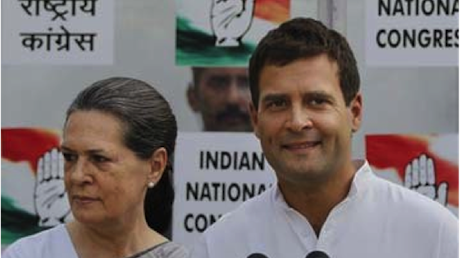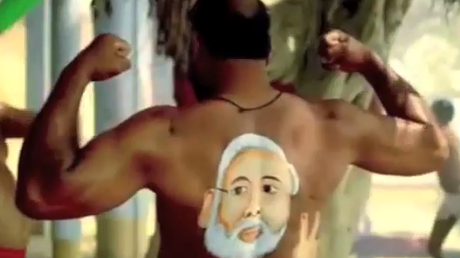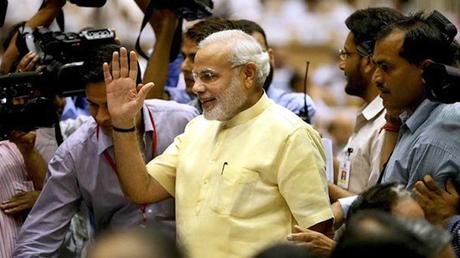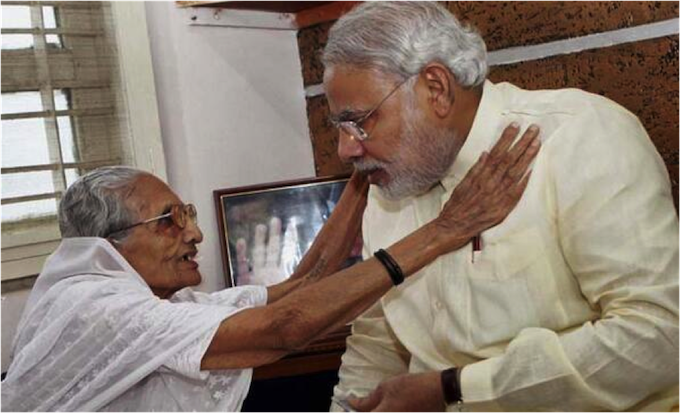The world’s biggest democracy – India has chosen the Bharatiya Janta Party’s (BJP) Narendra Modi as their next Prime Minister. Weeks of endless speculation on the numbers ended within hours once the counting of votes began early yesterday afternoon (Australian time). BJP was clearly leading from the outset with astounding margins in the majority of constituencies - the party's best performance ever.
The so-called ‘divisive’, ‘autocratic’ and ‘polarising’ Chief Minister of Gujarat had won the overwhelming confidence of the vast Indian electorate. Modi, 68, has won from both the constituencies he contested from – Vadodara and Varanasi. Soon after the results declared him and his party a winner, Narendra Modi tweeted ‘India has won. Good days beckon us.’
Modi’s first stop post his victory was to visit his elderly mother. “My son will lead the country towards development,” said his mother Hiraba, who had prayed for his victory. By late evening it was clear that BJP, even without its allies, has crossed the crucial mark of 272 seats to gain an outright majority in the house - the first since 1984.
Pundits have long predicted that this epic campaign would result in a "Modi Wave". But as the results came in, it was more accurately likened to a tsunami. The results surprised Modi supporters and sceptics alike.
Celebrations soon began at BJP’s Ashoke Road headquarters in Delhi after the counting began. Visuals of fireworks, ladoos (indian sweets, eaten in celebration), dhol (drums) and dancing were flashed across the Indian news channels and the world.
The question many began to ask was what had delivered the BJP such stunning success? Was it due to policy, or strategy, or the disillusionment of the electorate with the old paradigms?
Projecting Narendra Modi as its Prime Ministerial candidate in mid-September last year and turning this electoral fight into a presidential-style election has proved to be an inspired strategy for the BJP.
Few leaders within Modi’s own party had faith in him. Some were plainly apprehensive about designing their campaign around Modi, and even resisted the strategy to a substantial extent.
But Modi worked hard within those constraints with teams of his supporters and cadre within the party. In an exhausting, unrelenting campaign, between 15 September 2013 tand 10 May 2014, Modi addressed 5827 rallies/programs/events. He travelled around 300,000 kilometres over 25 states, using an armouring of tactics unprecedented in terms of outreach and innovation. Where he couldn’t go himself, he reached out and addressed the people through his 3D hologram rallies, appearing virtually like a kind of Indian Obi Wan Kenobi
The most remarkable support has come from the youth, especially those aged between 18 and 25, who are desperate for jobs.
The mandate is also a clear indication of the faith people have put in Modi to revive the economy, bring down prices of essential commodities and improve infrastructure throughout the country. For the first time, it seems Indian voters have overlooked the caste, creed, religion and region to vote for a man who promises to revive the sluggish economy and restore ‘Indian honour’.
While youth and the hope of economic revival have bolstered Narendra Modi, the credit for his win also goes to Congress Vice President Rahul Gandhi’s leadership skills - or, rather, the lack of them. His party's humiliatingly woeful results point out that people of India have rejected Gandhi and his politics. The Congress party not only was fighting the huge anti-incumbency factor but was in denial of the “Modi wave” till the last day.
Despite the exit polls predicting (accurately, as it turned out) their rout, Congress remained defiant, all the while chalking strategies to defend the Gandhi Scion.
Rahul Gandhi alone isn’t to be blamed. UPA II’s disastrous term, riddled with financial scams, mis-governance, lack of authority and respect for the Prime Minister, all played their part in what is recognised as the Congress Party's worst performance ever.
While Sonia Gandhi was barely seen in the campaign owing to her poor health, other senior Congress leaders were also absent from the hustings, perhaps sensing that an imminent loss awaited them. Meanwhile Rahul Gandhi trotted around aimlessly from one part of the country to next, delivering speeches that had no resonance with the public. The results display his utter failure to connect with the crowd. Congress has been wiped out in Rajasthan, Gujarat, Bihar, Uttar Pradesh, West Bengal, Uttarakhand, J&K, Madhya Pradesh, Maharashtra.
On the counting day, Rahul Gandhi remained indoors, while the senior leaders of the Congress Party were left to defend their dismal performance. “It’s a crushing and a devastating defeat for Congress. The numbers speak for themselves and its time for some serious introspection,” said Ashwani Kumar, a senior Congress leader, post the results.
While Congress and Rahul Gandhi will now dissect the reasons behind their failure, Narendra Modi will leave for New Delhi from his residence in Gandhinagar on Saturday morning. A rousing welcome and celebrations await him in the capital. But with a blueprint of his cabinet ready, Modi is likely to get on with the task of forming the next government as soon as the celebrations ease back.
India has reposed huge faith in him. With great expectations to be fulfilled, Narendra Modi’s toughest challenge will now be to deliver on the promises he has made.






